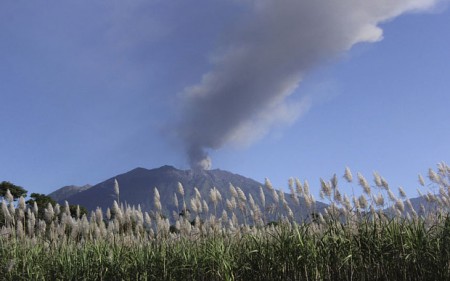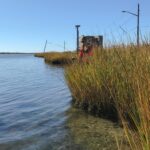July 10, 2015 – It’s just another day in the Earth’s Ring of Fire, the area of our planet where volcanoes and seismic activities predominate. Ringing much of the Pacific Ocean the Ring of Fire produced the massive earthquake and tsunami that turned Fukushima into a nightmare, and that killed an estimated 300,000 in the Indian Ocean in 2004.
So it is no surprise to read headlines today describing the grounding of airplanes on Java, Indonesia’s main isalnd, as well as Bali because another Ring of Fire event has occurred, the eruption of Mt. Raung on Bali which has sent an ash cloud some 200 kilometers (125 miles) downwind disrupting airport operations. Mt. Raung is just one of 130 active volcanoes in Indonesia. A similar event occurred in Europe when Iceland’s Mt. Eyjafjallajokull erupted in 2010 closing down many of Europe’s airports.
But eruptions that close airports is not the only thing that volcanoes do to disrupt our daily lives. They also alter climate. A study appearing in the journal Nature this month shows that volcanic eruptions correlate with cooling of the atmosphere and that the cooling is in direct proportion to the amount of airborne matter the volcanoes discharge as well as their location. At most the impact is short persisting between five and ten years after an eruption.
In studying historic records dating back 2,500 years the scientists implicate volcanic eruptions with pandemics, famines, socio-economic disruptions and other events.
What is it that makes volcanic eruptions climate influencers?
Aerosols consisting of ash and sulfates that rise into the stratosphere and spread on a global scale. The historic chronologies line up with atmospheric aerosol concentrations in sample ice cores and in tree-ring records. It is only recently that scientists have developed accurate tree-ring and ice core chronologies and these give us multi-decadal pictures of climate change as a consequence of volcanic eruptions.
In years when known volcanic eruptions occurred following summers were cooler than normal. A lag between concentrations of particulate matter found in ice cores and decreases in tree ring growth amounted to between one and seven years. The lengthier lag period occurs in larger and longer eruptive events and those from tropical regions.
The scientists align findings with a number of historic cooling events observed in written records from Europe and the Mediterranean:
- a mystery cloud associated with a volcanic eruption appears in historic writings in the Mediterranean Basin around 536 CE (CE stands for Common Era, the equivalent to AD) and in a second eruptive phase between 539 and 540 CE. It is accompanied by significant cooling (a temperature decline of 1.4 to 2.7 Celsius or 2.5 to 4.9 Fahrenheit) and a series of pandemics.
- similar patterns are noted in 40 summers between the years 1000 and 1099 CE all aligning with volcanic eruptions.
- cold events in the year 426 BCE (Before the Common Era, equivalent to BC), 44 BCE and 1257 CE all correlate to high sulfate-and ash levels in ice-core samples.
In all these cases the primary driver of cooling is volcanic. And that’s not all. Researchers are able to identify 283 individual eruptive events over 2,500 years. Half of these are associated with Northern Hemisphere eruptions. 81 correlate to tropical eruptions. Those from the tropics prove to be the most impactful contributing 64% of total aerosol atmospheric load. Northern Hemisphere eruptions have shorter duration cooling lasting on average less than five years. Tropical eruptions show noticeable cooling with longer recovery times of six to ten years.
Now the researchers are going even further back to look at known historic and prehistoric records aligned with ice-core and tree rings dating all the way back to the beginning of the Holocene, some 12,000 years ago.
It is interesting research that provides some insight into Earth’s atmospheric dynamics. But what it doesn’t do is poke any kind of hole in the scientific consensus regarding climate change and our human influence.
















